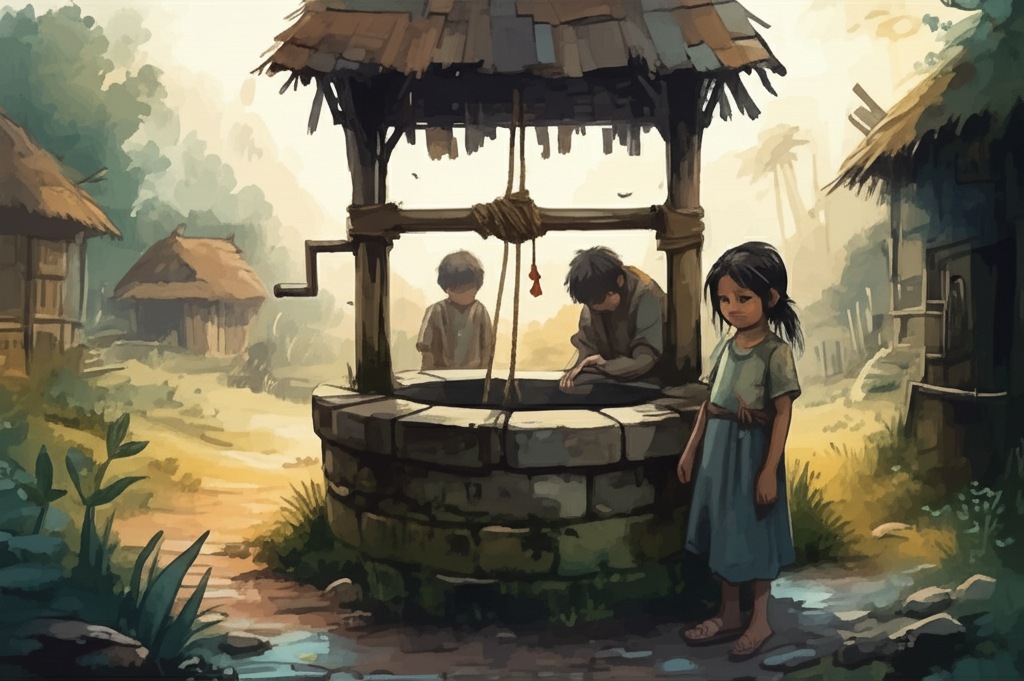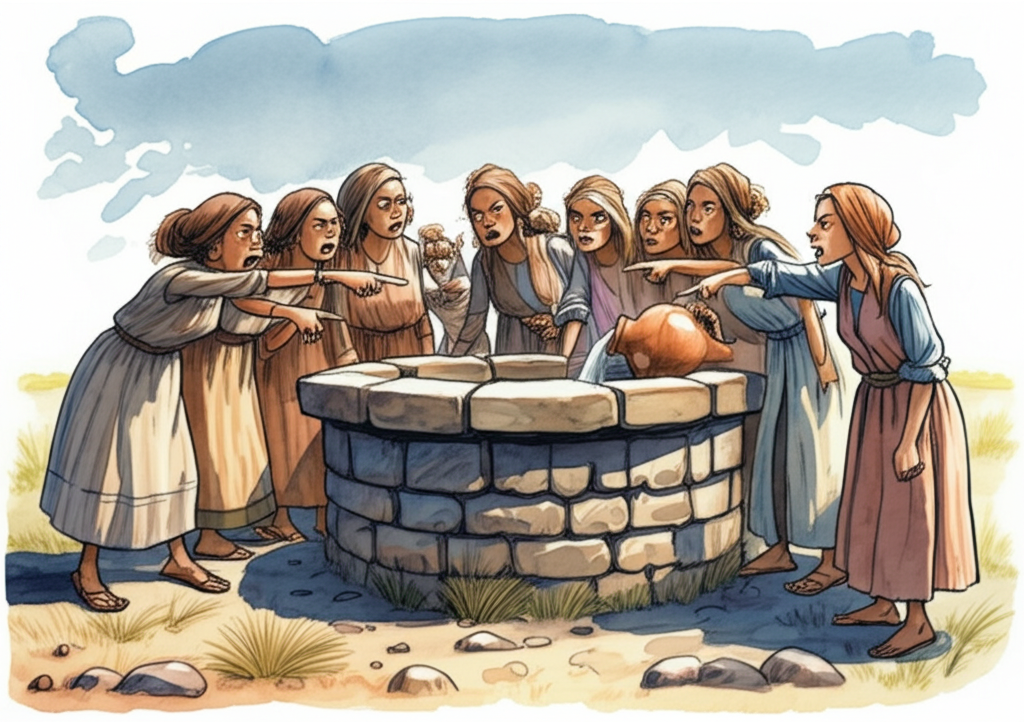
Once upon a time, there were seven brothers and their sister. The brothers were all married, but their wives didn’t want to cook for everyone. Their sister stayed home to do all the cooking. The wives were very jealous of her because of this. They decided to trick her so one of them could be the cook instead. They said, “She doesn’t go out to the fields to work. She just stays home, but she doesn’t even have the food ready on time!” They asked a magical being called a Bonga to help them. They promised the Bonga good things if he would help them. They told the Bonga, “When our sister goes to get water, make the water disappear when she tries to fill her jar. Then make it slowly come back. That will make her late! And maybe you can keep her for yourself!”
At lunchtime, the sister went to get water, but the water suddenly vanished! She started to cry. Then, slowly, the water started to come back. When it was up to her ankles, she tried to fill her jar, but it wouldn’t go under the water. She was scared and started calling for her brother:
"Oh! my brother, the water is up to my ankles,
But, Oh! my brother, I can't fill my jar!"
The water kept rising until it was up to her knees. She cried again:
"Oh! my brother, the water is up to my knees,
But, Oh! my brother, I still can't fill my jar!"
The water kept going up, and when it reached her waist, she cried out:
"Oh! my brother, the water is up to my waist,
But, Oh! my brother, I still can't fill my jar!"
The water still rose, and when it reached her neck, she kept crying:
"Oh! my brother, the water is up to my neck,
But, Oh! my brother, I still can't fill my jar!"
Finally, the water was so deep that she felt like she was drowning. She shouted:
"Oh! my brother, the water is taller than a man,
Oh! my brother, my jar is starting to fill!"
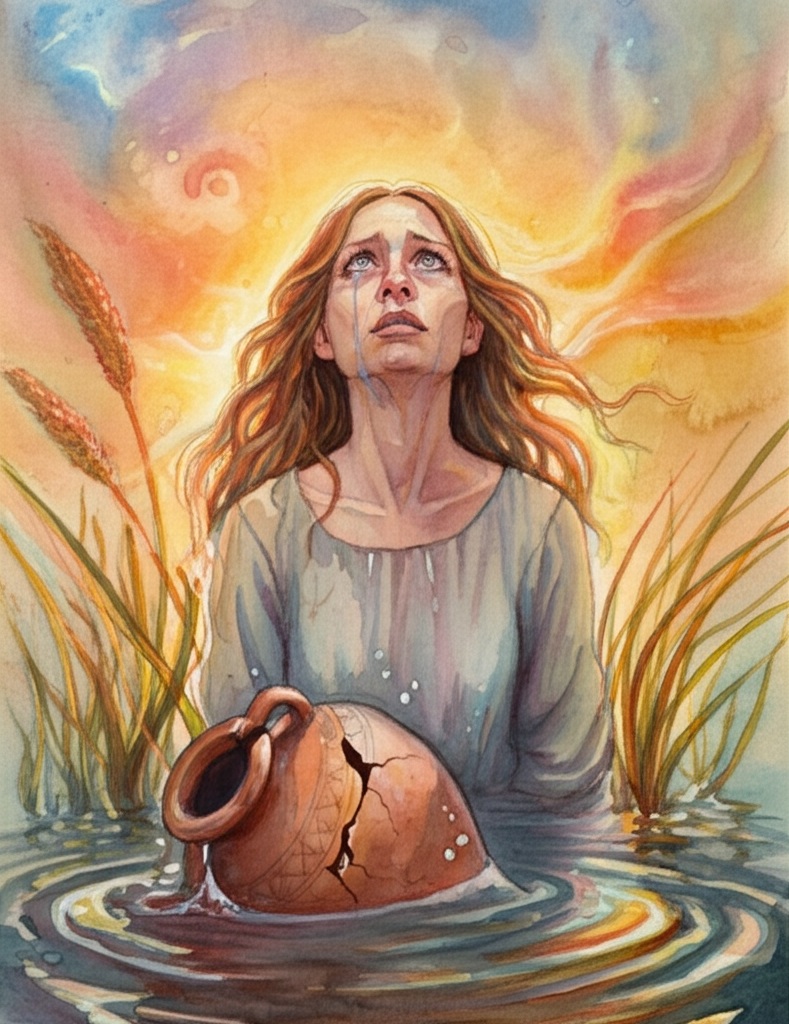
The jar filled with water, and she sank down with it and drowned. The Bonga turned her into a Bonga like himself and took her away.
After a while, she came back as a bamboo plant growing near the water where she had drowned. The bamboo grew very tall. A musician, called a Jogi, walked by and saw it. He thought, “This would make a great fiddle!” So, he came back with an axe to cut it down. But when he was about to start, the bamboo called out, “Don’t cut at the bottom, cut higher up!” When he lifted his axe to cut higher up, the bamboo cried out, “Don’t cut near the top, cut at the bottom!” When the Jogi got ready to cut at the bottom, the bamboo said, “Don’t cut at the bottom, cut higher up!” And when he was about to cut higher up, it said again, “Don’t cut high up, cut at the bottom!” The Jogi was sure that a Bonga was trying to scare him. He got angry and cut down the bamboo at the bottom. He took it home and made a fiddle out of it.
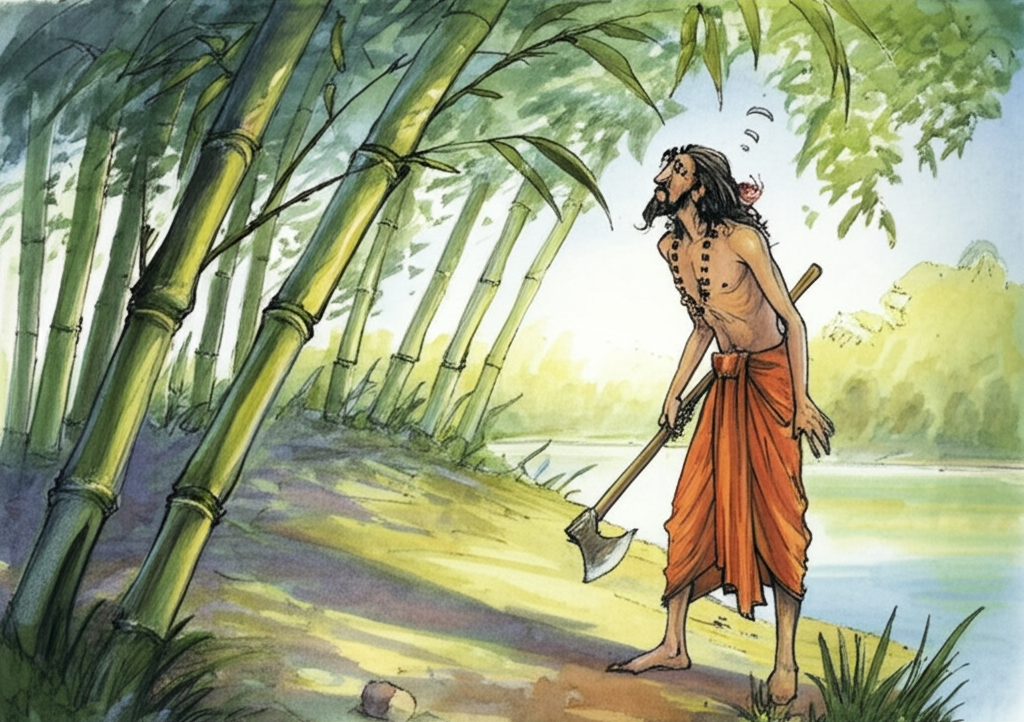
The fiddle sounded amazing, and everyone loved to hear it. The Jogi took it with him when he went to ask for food, and the music was so good that he always came home with a full bag of food.
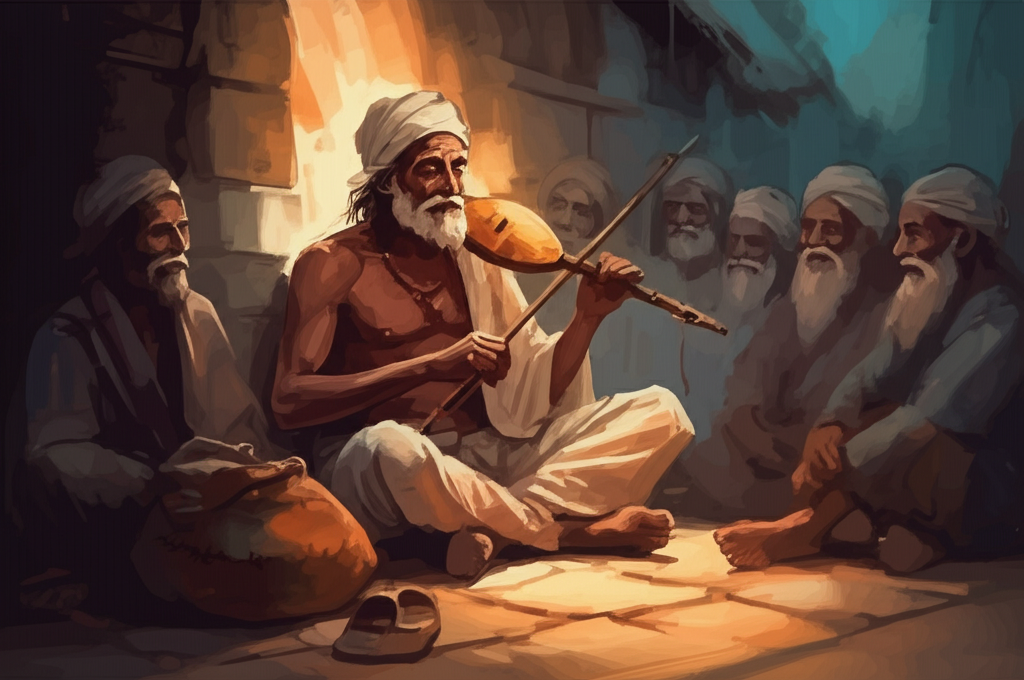
Sometimes, when he was traveling, he would visit the house of the Bonga girl’s brothers. The music from the fiddle made them feel very sad. Some of them even cried because the fiddle sounded like someone in pain. The oldest brother wanted to buy it. He offered to give the Jogi food for a whole year if he would sell him the fiddle. But the Jogi knew how special it was and didn’t want to sell it.
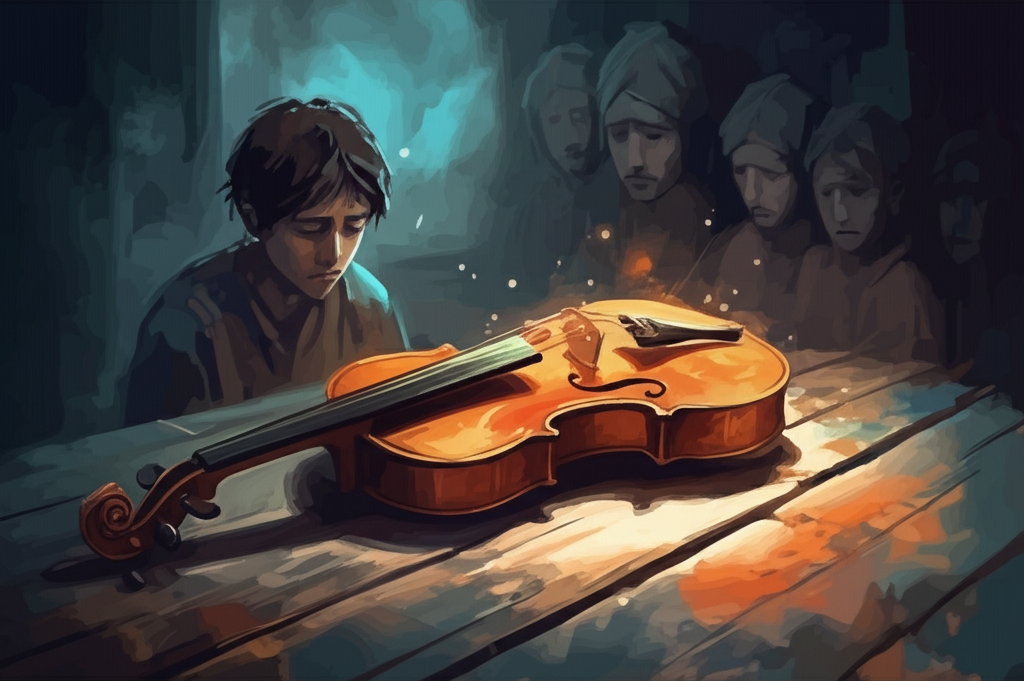
One day, the Jogi went to the house of a village leader and played his fiddle. He asked for something to eat. The leader offered to buy the fiddle and promised to pay a lot for it. But the Jogi said no because the fiddle was how he got his food. The leader saw that he wouldn’t sell it, so he gave him food and lots of drinks. The Jogi drank so much that he got very sleepy. While he was sleeping, they took away his fiddle and put their old, broken one in its place. When the Jogi woke up, he realized his fiddle was gone. He thought they had stolen it and asked them to give it back. They said they didn’t take it, so he had to leave without his fiddle. The leader’s son was a musician, and he played the Jogi’s fiddle. Everyone loved the beautiful music it made.
When everyone was out working in the fields, the Bonga girl would come out of the bamboo fiddle and make food for the leader’s son. She would eat some herself and then put the rest under his bed, covering it up so it wouldn’t get dirty. Then she would go back into the fiddle. This happened every day. The others in the house thought that one of the young man’s friends was doing this to be nice to him. So they didn’t worry about it. But the young leader wanted to find out who was doing it. He thought, “I’ll catch her today and scold her! She’s making me look silly in front of everyone else!” So, he hid behind a pile of wood. Soon, the girl came out of the bamboo fiddle and started to fix her hair. After she was done, she cooked the rice like always. She ate some and put the rest under the young man’s bed. As she was about to go back into the fiddle, he jumped out and grabbed her! The Bonga girl cried, “Oh no! You might be someone I can’t marry!” He said, “No. From today on, you and I are together.” And they started talking and getting to know each other. When the others came home, they saw that she was both a human and a Bonga, and they were very happy.
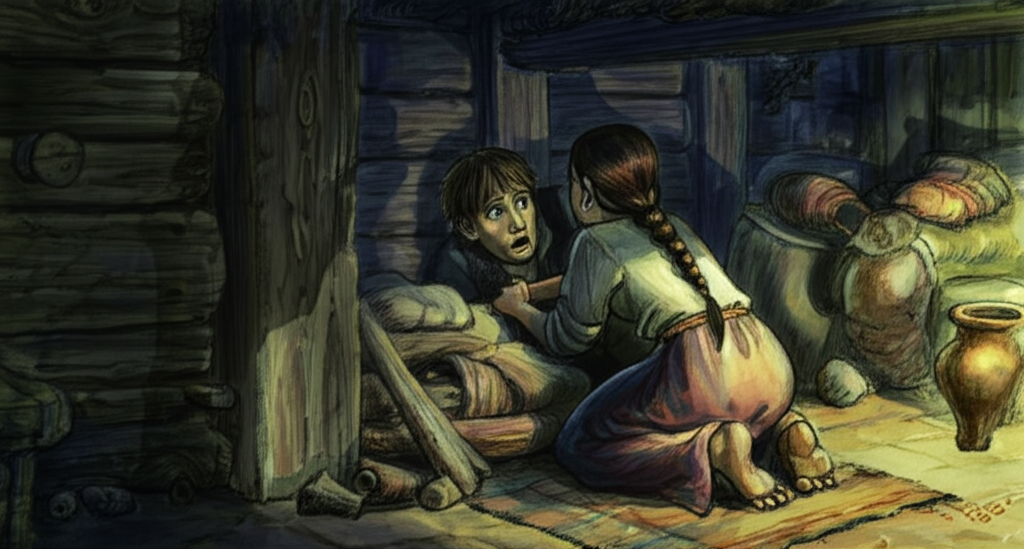
After some time, the Bonga girl’s family became very poor. One day, her brothers came to visit the leader’s house.
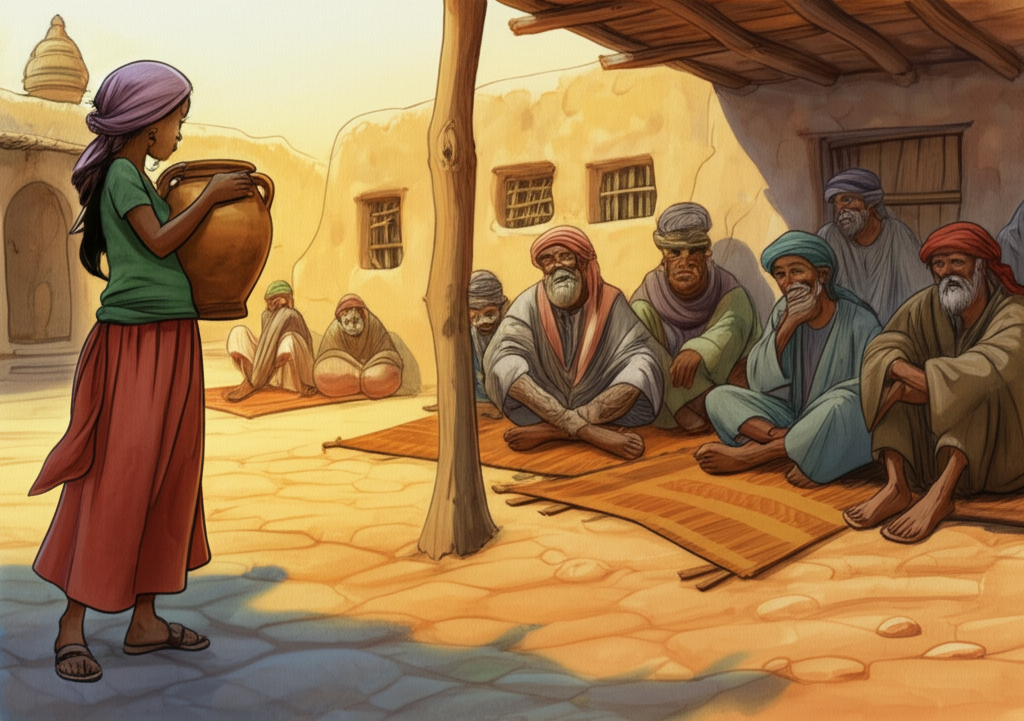
The Bonga girl knew them right away, but they didn’t know who she was. She brought them water when they arrived and then gave them food. Then she sat down near them and started to talk in a sad voice. She told them how badly their wives had treated her. She told them everything that had happened and said, “You must have known all this, but you didn’t help me!” And that was all the revenge she took.
